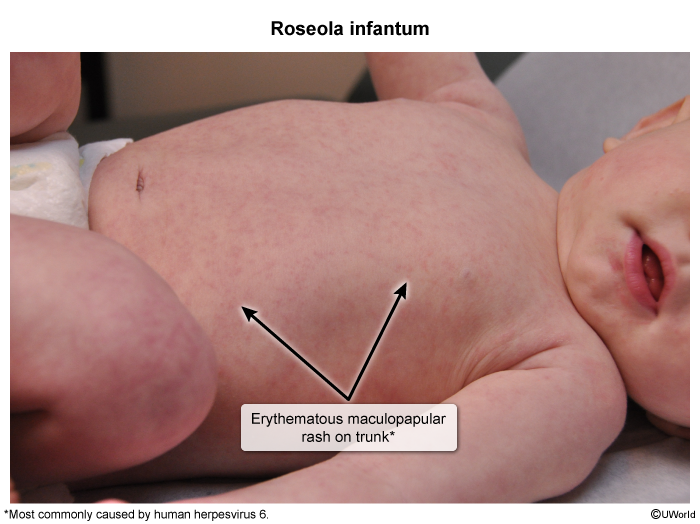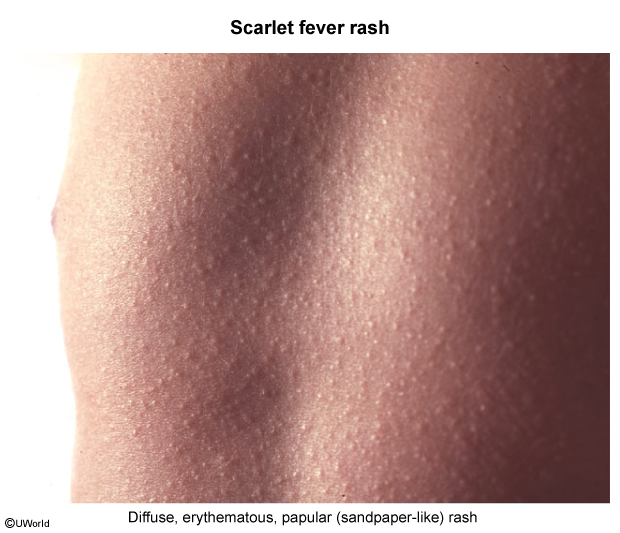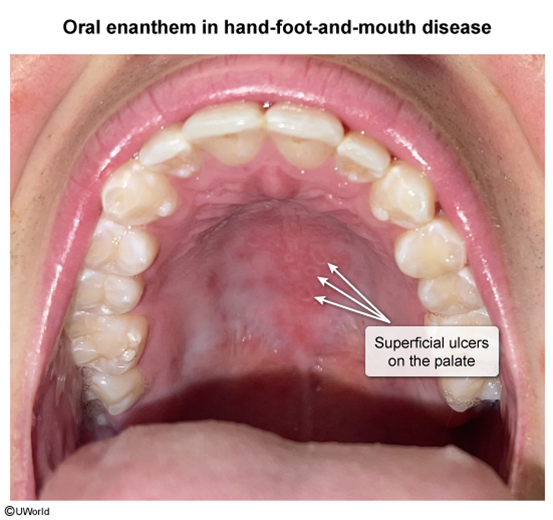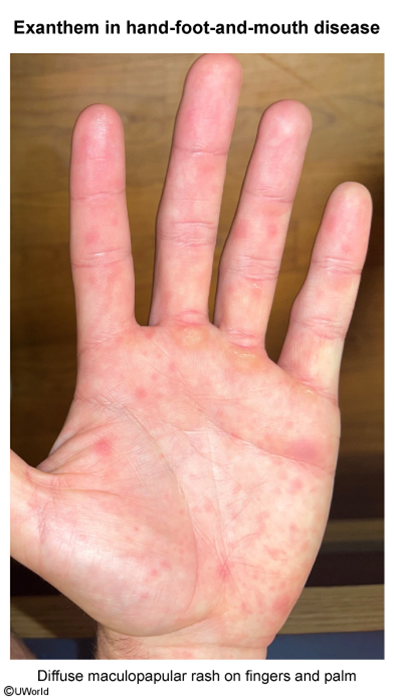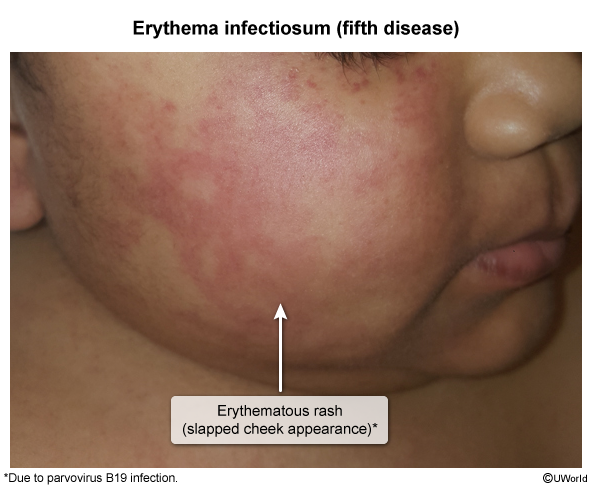Roseola
Article Sections
Introduction
Roseola infantum (exanthema subitum or sixth disease) is a common childhood viral exanthem caused primarily by human herpesvirus 6 (HHV-6). It presents with a high fever for several days, followed by abrupt defervescence and the development of a maculopapular rash.
Pathophysiology and risk factors
HHV-6 infects most children by age 2 years and is most likely transmitted through infected secretions of asymptomatic close contacts (eg, via saliva from mother to infant). Following transmission, the mean incubation period is approximately 9-10 days. HHV-6 replicates within CD4+ T cells, causing immune dysfunction and cytokine production that manifests as high fever. The cause of the rash is unknown but may be related to antibody-antigen interaction after the initial febrile phase.
After initial infection, HHV-6 remains latent in the body, contributing to asymptomatic lifelong shedding and a high prevalence of infection among infants and young children with no known exposure. There are no risk factors for roseola infantum, but infection is most common in children age <2.
Continue Learning with UWorld
Get the full Roseola article plus rich visuals, real-world cases, and in-depth insights from medical experts, all available through the UWorld Medical Library.
Figures
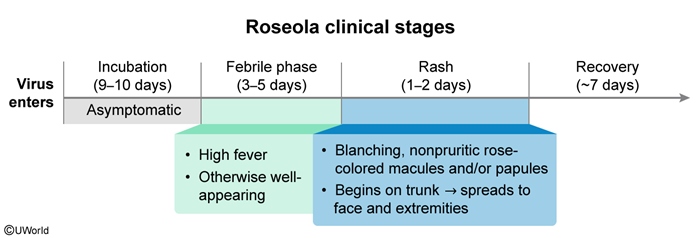
Images
